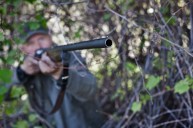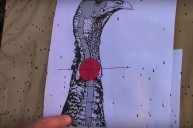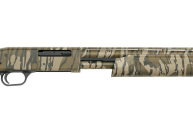The right choke tube will extend the range and effectiveness of your trusty 12-gauge.
Choke tubes provide an amount of constriction at the end of the barrel. The constriction "squeezes" the shot and the wad so it spreads out at a certain rate.
While this is an over-simplified explanation for all the turkey hunting enthusiasts out there, you should take care to consider all your options.
Let's dive in.
Cartridges
You have to start with what is legal in your area. This includes the minimum shot size as well as the composition of the shot. For instance, in some areas turkey hunting must be conducted with shot size no smaller than #4.
Regulations may require non-toxic shot in some areas and the smallest gauge you are allowed to use may be spelled out specifically in the law.
You will get the best patterns with a premium quality shotshell. The wad, shot, hull and velocity are the result of tons of research and development.
Some shotshells are designed to work with a specific choke tube constriction and some choke tubes are designed to work with a specific shotshell. One example is the Trulock Choke tube designed to work specifically with Federal Heavyweight #7 shot.
Shot
Turkeys are not that hard to kill, however it does take several pellets in the head and neck area to get the job done. This means the pellets have to penetrate and that requires retained weight and velocity.
Typically, the tungsten-alloy shot offers the best combination of weight to pellet size as well as the hardness to maintain its shape. These shells can be driven to impressive velocities, but they will only give proper performance through excellent choke tubes.
Sight-in
No matter how awesome your choke tube is, it is ridiculous to head to the woods without first sighting in your shotgun. Whether you have a bead, fiber optic sight or a scope you need to know exactly where the pattern is hitting at 25 yards and whatever your maximum range is.
Personally, I don't shoot at turkeys beyond 40 yards unless there are exceptional circumstances. My first choice is to try to get them to come in closer.
If there is a tom hung-up by himself with an unobstructed shot at his outstretched head and neck I might take the shot—if I know for sure my turkey choke tube is up to the task. Scopes and sights must be adjusted to get proper point of aim.
Beads and fixed aiming devices can be a point of reference or you can bend your stock or set your barrel (or have it done) to move the shot pattern where you want it.
Pattern
With turkey hunting choke tubes, the pattern is the key factor to how far you can shoot and still be lethal. The best way to pattern is to use an actual turkey target.
I recommend purchasing several brands, types or sizes of shotshells and examining the patterns of each. Pattern at various ranges to determine what the maximum range is where the pattern is still 100-percent effective.
The Choke Tubes
Don't get hung up on the "name." You are better off considering the amount of constriction you think you need for the range you want to achieve than just buying a turkey hunting choke tube that says "Turkey Slayer" on the package.
Match the choke constriction to the size shot you prefer using the following guideline: #4 shot—.665 or greater, #5 or # 6 shot—.650 or greater. There's also a good chart available from Carlson's Choke Tubes.
Additionally, ported choke tubes can reduce muzzle flip and recoil.
Hunters are getting excited everywhere for spring turkey hunting season. As long as you follow some of these suggestions for the right choke tubes, you'll be ready, too.
Get out there and get some gobblers!
NEXT: HOW TO AGE A TURKEY BY ITS SPURS
WATCH




